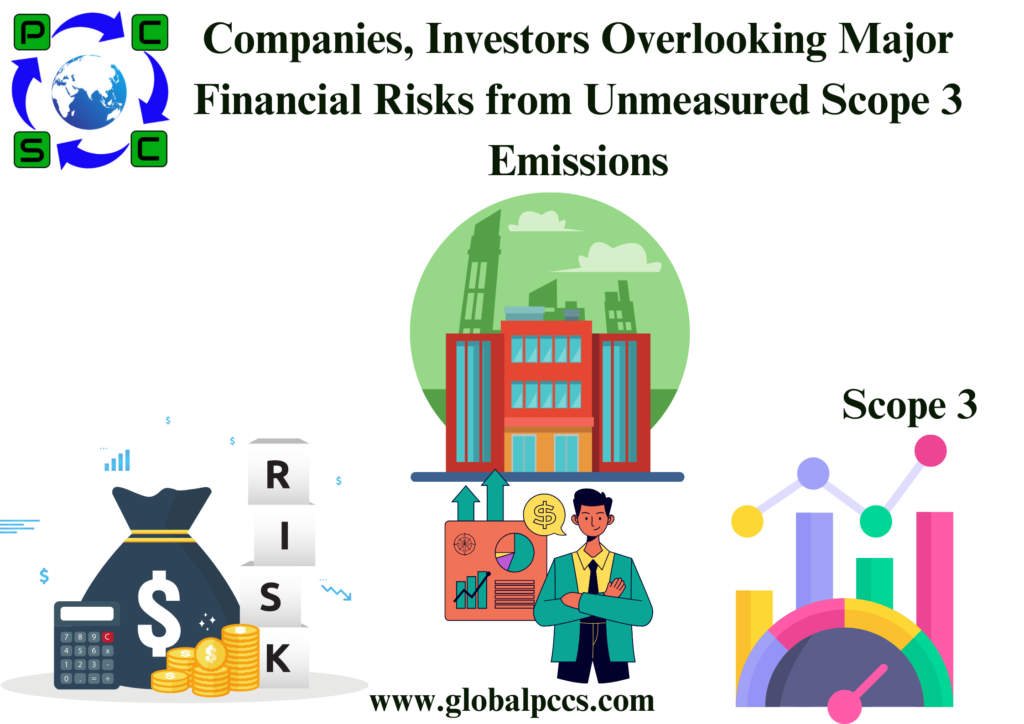 Most companies and investors are not yet measuring and targeting reductions in Scope 3 value chain emissions, leading to significant overlooked and unreported financial risks in their supply chains, according to a new report released.
Most companies and investors are not yet measuring and targeting reductions in Scope 3 value chain emissions, leading to significant overlooked and unreported financial risks in their supply chains, according to a new report released.
Regarding the study “Scope 3 Upstream: Significant Difficulties, Easy Solutions,” The answers to CDP’s request for 2023 data were examined by CDP. Investors and other stakeholders can monitor an organization’s performance in critical environmental sustainability areas such as plastic-related impact, deforestation, water security, and climate change by using the global environmental disclosure system that CDP manages. A record number of over 23,000 companies were revealed by CDP in 2023, a 24% increase from the previous year, representing businesses valued at over $67 trillion, or more than 66% of the world’s market capitalization.
Scope 3 emissions typically account for the significant majority of most companies’ emissions footprint. According to the report, companies’ supply chain emissions reported to CDP were on average 26 times higher than their combined Scope 1 and 2 operational emissions.
Despite the disproportionate scale of Scope 3 emissions, however, value chain emissions, occurring outside the direct control of companies, are also typically the most difficult to measure and manage. The report found, for example, that companies are twice as likely to measure Scope 1 and 2 emissions than Scope 3, and 2.4 times more likely to set Scope 1 and 2 emissions reduction targets than Scope 3.
According to the study, the lack of measurement and management of Scope 3 emissions can lead to significant unreported risks for companies and investors, and overlooked material supply chain risks that can adversely impact corporate performance. Based on upstream emissions in 2023 from just the top 3 Scope 3-emitting sectors, manufacturing, retail and materials sectors, for example, the report found an implied carbon liability of more than $335 billion, at the IMF-proposed 2030 $75 floor carbon price.
Despite the potential liability, however, only half of CDP-reporting companies evaluate the financial risks from upstream emissions, yet a third of these companies acknowledge risks to profit from Scope 3 emissions. Similarly, only around a third of investors have investment policies in place mandating climate-related requirements for investee companies, and only 10% require the disclosure of Scope 3 supply chain emissions.
The report identified 3 factors, out of more than 20 examined, that emerged as statistically significant to target setting and action on Scope 3 emissions, including having in place a “climate-responsible board,” supplier engagement and internal carbon pricing. Companies disclosing through CDP that had a board with climate oversight and at least one climate-competent board member, for example, were found to be 4.8x more likely to have a 1.5°C-aligned transition plan with a Scope 3 target, according to the report. Similarly, companies that engage with suppliers on climate-related issues, and those that have adopted an internal carbon price were found to be nearly 7x as likely, and 4x as likely, respectively, to have a 1.5°C-aligned transition plan and a Scope 3 target.
Overall, the report found that 34% of companies have a climate-responsible board, 41% are engaging with suppliers, and 14% are using an internal carbon price.








 Authorised IMDS & CDX Training & Consulting partner for
Authorised IMDS & CDX Training & Consulting partner for






